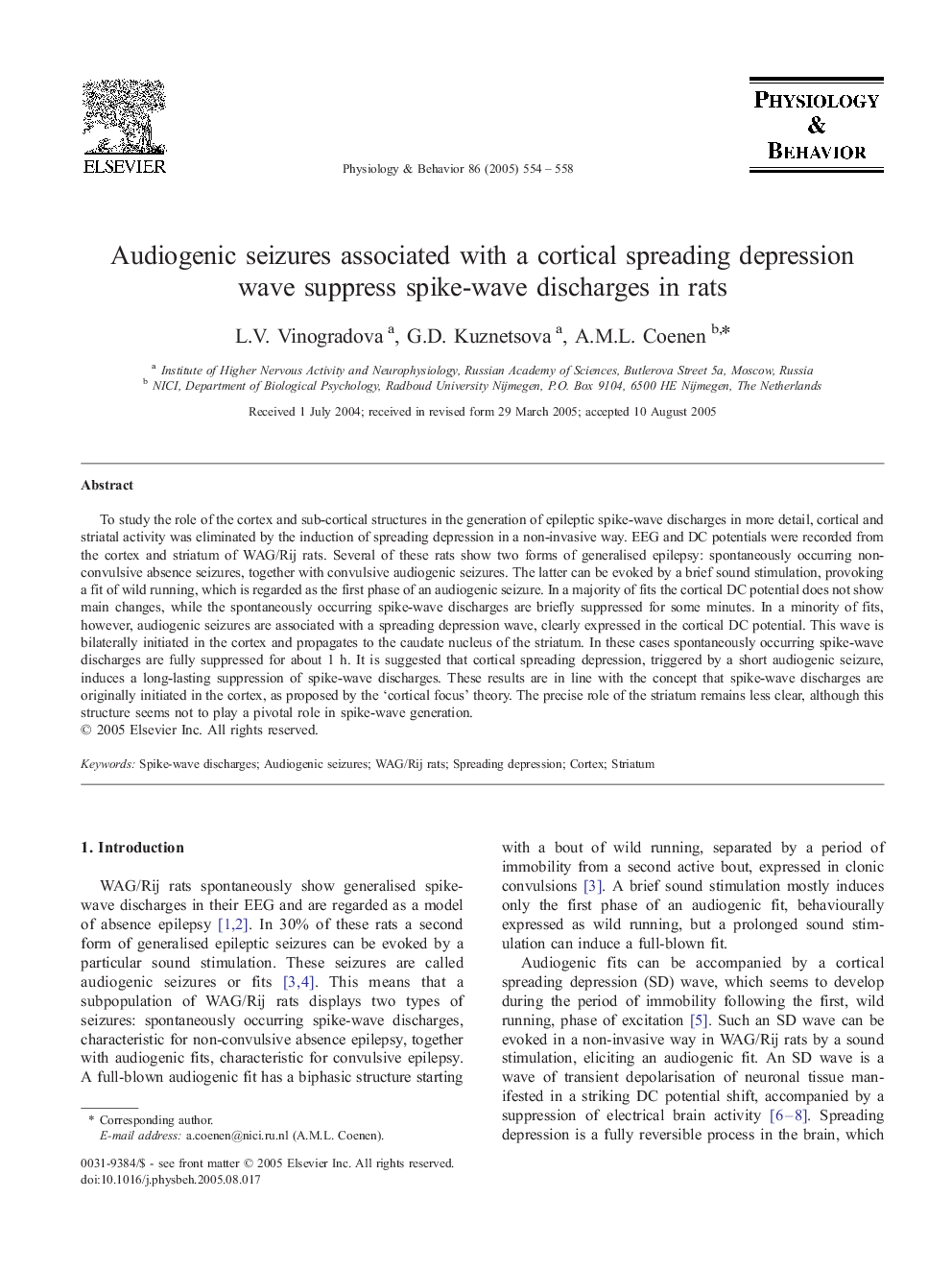| Article ID | Journal | Published Year | Pages | File Type |
|---|---|---|---|---|
| 9149548 | Physiology & Behavior | 2005 | 5 Pages |
Abstract
To study the role of the cortex and sub-cortical structures in the generation of epileptic spike-wave discharges in more detail, cortical and striatal activity was eliminated by the induction of spreading depression in a non-invasive way. EEG and DC potentials were recorded from the cortex and striatum of WAG/Rij rats. Several of these rats show two forms of generalised epilepsy: spontaneously occurring non-convulsive absence seizures, together with convulsive audiogenic seizures. The latter can be evoked by a brief sound stimulation, provoking a fit of wild running, which is regarded as the first phase of an audiogenic seizure. In a majority of fits the cortical DC potential does not show main changes, while the spontaneously occurring spike-wave discharges are briefly suppressed for some minutes. In a minority of fits, however, audiogenic seizures are associated with a spreading depression wave, clearly expressed in the cortical DC potential. This wave is bilaterally initiated in the cortex and propagates to the caudate nucleus of the striatum. In these cases spontaneously occurring spike-wave discharges are fully suppressed for about 1 h. It is suggested that cortical spreading depression, triggered by a short audiogenic seizure, induces a long-lasting suppression of spike-wave discharges. These results are in line with the concept that spike-wave discharges are originally initiated in the cortex, as proposed by the 'cortical focus' theory. The precise role of the striatum remains less clear, although this structure seems not to play a pivotal role in spike-wave generation.
Related Topics
Life Sciences
Biochemistry, Genetics and Molecular Biology
Physiology
Authors
L.V. Vinogradova, G.D. Kuznetsova, A.M.L. Coenen,
